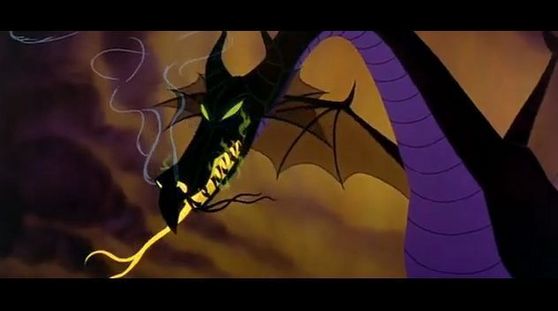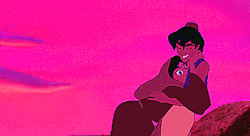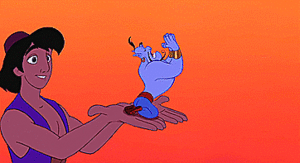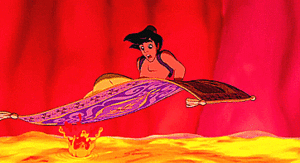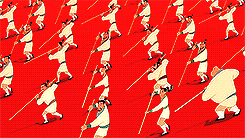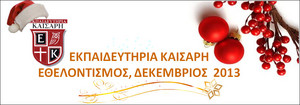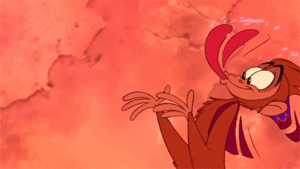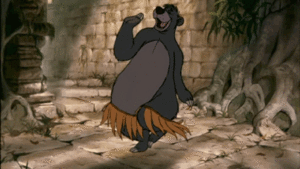For generations, Disney has been entertaining millions and bajillions of individuals, both children and adults. The stories are captivating, the characters compelling, the villains wicked as can be, and the settings quite often stunning. There was a brilliant man who identified all these traits independently of the Disney mission. This man was J.R.R. Tolkien and he wrote an essay called “On Fairy-Stories.”
The reason that the Disney movies, especially the classics, have withstood the test of time and continue to enchant people all over the world is for the simple reason that Tolkien gives. The Disney stories do not ask the viewers to suspend belief for the duration of the film. Rather, they invite you into a secondary world where magic is believable, dragons are alive, and one may encounter a fairy at any turn of the page. Many Disney stories include the elements pointed out by Tolkien, but this paper will only focus on a select few, as there are several hundred Disney works.
First we must disregard the Disney movies with animals as main characters, as does Tolkien. Not that these stories are any less enjoyable, but they do not lend themselves to the “Faërie land” that Tolkien describes. More in the sense of the fairy stories are Sleeping Beauty, Snow White and the Seven Dwarfs, Aladdin, Cinderella, and others that will be mentioned along the way.
A main theme that Tolkien discusses is the element of beauty and nature. Nature, he says, acclaims to “primal ‘desires’ that lie near the heart of Faërie: the desire of men to hold communion with other living things” (46). For this reason, the animals that act as adjuncts in the Disney movies are considered legitimate characters. They also tend to be important staples of the story. Nearly all the Disney princesses, for instance, have an encounter with some animal with which she can communicate, by words or gestures. Some, like Cinderella, Snow White, and Ariel, have forest friends and other animals who sew a beautiful dress, help with chores, or follow her around on underwater adventures. These animals tend to talk explicitly with the princess. Others, like Pocahontas, Mulan and Jasmine, speak to their animals through understanding. Pocahontas and her friends Meeko and Flit understand one another plainly. Flit attacks John Smith, and Pocahontas says knowingly, “Flit just doesn’t like strangers.” Mulan has a rather good relationship with her horse Kahn and her lucky cricket, neither of which talks, but both care for her and want her to succeed. Jasmine has a pet tiger Rajah to whom she is very attached. When Jasmine says, “I’ve never had any real friends!” Rajah picks up his head and growls as if offended, until Jasmine says, “Except you, Rajah” to which Rajah puts his head back down, content.
The film Pocahontas takes nature one step further. For Pocahontas, “Every rock and tree and creature / has a life, has a spirit, has a name.” Her talking tree, Grandmother Willow, presents an element of magic to the previously historical tale. She acts almost as a fairy godmother, but more ent-like, only unlike the other fairy godmothers and ents, she cannot move. However, she is there when advice and help is needed, and she has been there for Pocahontas and her mother before her, and probably down the line, so she is old like an ent.
Beauty was mentioned in the realm of Faërie as well. This is used several times in the course of Disney history, especially in regards to enchantment through beauty. Most of the time, enchantment through beauty is the way in which the hero and the heroine are first brought together. This happens to Aladdin, who sees Jasmine in the market place, and to John Smith who is about to shoot Pocahontas before he realizes she is really beautiful. Tolkien says in passing as an element of fairy-stories, “Beauty that is an enchantment, and an ever-present peril” (38). Enchantment as peril can be seen in some of the villains or villainous temptations that are seen in Disney films.
As for villains, we see the evil queen, Snow White’s stepmother, grow vain and proud in her own fair appearance. She grows so proud that as soon as she discovers that Snow White is considered fairer than she, she plans to have the young girl murdered. When that fails, she tries again, ironically transforming herself into an ugly hag so as not to arouse suspicion. The poisonous apple, too, she turns into a tempting red to deceive Snow White. After being dipped in the concoction, the apple shows a skull on its skin, and the queen says, “Look! On the skin! The symbol of what lies within. Now, turn red, to tempt Snow White, to make her hunger for a bite.” Another villainess who seduces through beauty, this time false like Snow White’s apple, is the sea-witch, Ursula. Ursula’s plan is to seduce Eric, the prince with whom Ariel is madly in love. Ursula turns herself into a human girl, beautiful in appearance, and rechristens herself Vanessa. She not only has the element of physical beauty, but having stolen Ariel’s voice, she also has the vocal beauty with which Ariel had first bewitched Eric, only with less nefarious purposes.
Also in regards to Ariel, she is tempted (and succumbs to the temptation) to make a deal with Ursula in order to become human, even though Ursula is the evil sea-witch. This shows the temptation to a bad action because it appears to be good at the time. This is what happens with Snow White and her apple. It is also what entices Pinocchio, several times, away from the straight and narrow path. First Pinocchio is enticed to quit school to become an actor, for he thinks it to be full of glamour and fame. After Jiminy Cricket and the Blue Fairy get him out of that mess, he succumbs to another temptation, and that is Pleasure Island, the place where idiot boys become donkeys. The name itself is enticing enough, but there are games for the young boys, windows to vandalize, and candy gratis all day long. It would seem to be pleasurable enough to spend the day in vice, but it is clear that at the end of the day it is not good for them.
Tolkien writes about the intertwining characteristics of nature with magic, saying, “[F]airy stories as a whole have three faces: the Mystical towards the Supernatural; the Magical towards Nature; and the Mirror of scorn and pity towards Man. The essential face of Faërie is in the middle one, the Magical” (53).It is now time to delve into the meat of the matter and discuss the magic in the Disney stories, and amid this discussion, dragons.
First we turn to a film with too many elements of Faërie to be ignored: Sleeping Beauty. It has already been mentioned above, but briefly. There are more elements to the tale, however, including magic, dragons, good, evil, and again a Secondary World that Disney creates. The main sources of magic are the three good fairies, Flora, Fauna and Merryweather, and the evil sorceress, Maleficent. The natures of these enchantresses can already be guessed by their appropriate names. The good fairies use their magic to help the beautiful princess. They bestow their gifts on Aurora, one that she may be beautiful, another that she have a lovely voice. However, before Merryweather has a chance to bestow her gift on the child, Maleficent appears in rage and declares Aurora will prick her finger before she turns sixteen and die. In opposition to the evil witch’s spell, Merryweather attempts to mitigate the effects of the evil prophecy and declares that the princess will only sleep until awoken by true love’s kiss.
Another goodly quality of their magic is shown in their aid to Prince Philip. They give him a sword and a shield, with the spell, “Arm thyself with this enchanted shield of virtue and this mighty sword of truth. For these weapons of righteousness will triumph over evil.” Maleficent, in her attempts to stop Prince Philip, turns herself into the stereotypical dragon. As if the symbolism were not blatant enough, the Disney writers included her line, “Now shall you deal with me, old prince, and all the powers of hell!” And as Tolkien would have us believe, the viewer by now is on the edge of his seat, longing for that happy ending. Sure enough, Prince Philip triumphs over the dragon, killing Maleficent.
Similarly, Eric kills Ursula in the Little Mermaid, Giselle kills Narissa in Enchanted, and Tiana kills the evil sorcerer Facilier in the most recent Disney princess films. Facilier in particular is shown in his wickedness, as he practices voodoo and has “friends on the other side” in a more modern version of fairy tale black magic. The evil witch in Snow White, too, is a witch. Grumpy says insightfully, “She's full of black magic! She can even make herself invisible. Pfft! Might be in this room right now!” when the other dwarfs are ready to underestimate the queen’s power. In the end, though, her demise is brought upon her by her own hand and she falls off a cliff in her attempt to crush the dwarfs to death with a boulder.
Another dragon-like villain is Jafar in the movie Aladdin. The entire movie is thick with magic, from the genie to the magic carpet to the sorcerer Jafar himself. But the climax shows the true nature of the characters. Jafar wishes for greater and greater power, from sultan to sorcerer, in his ever-increasing greed for power. In his fight against Aladdin, he turns himself into a snake (a large version of a worm—or a dragon). Aladdin, meanwhile, without the use of magic but with his natural talent of wit and trickery, scams Jafar into wishing to become a genie, so as to ensnare Jafar in that unpleasant office of servant. Once Jafar is defeated peace returns to the city of Agrabah and another happy ending is celebrated.
Tolkien says in the epilogue to his essay that it is this happy ending that produces the greatest element of Faërie. His point is that the resurrection makes us long for the true happy ending: the one of our redemption. Given that the incarnation and salvation of man is the ultimate happy ending, every Faërie-story ending reflects this in some way. The films already discussed have the general “happily ever after” ending, but there are others that are more blatantly reflective of the resurrection. Princess Aurora, for instance, is brought “back to life” through her true love Philip, who had to conquer the dragon before rescuing her. Snow White, too, waited to be rescued by true love, and once awakened, ascends with her prince to a castle alight in the clouds.
Pinocchio, too, offers a good outline of the story of salvation. Even though Pinocchio falls again and again, he is forgiven and loved by his maker, Geppetto. When he finds out Geppetto has been eaten by the dreaded whale Monstro, he selflessly goes in his search and soon finds him. This hearkens to the “sign of Jonah” that Christ professes as well. Having escaped from the belly of the whale, Pinocchio is found face down in the shallows, apparently dead. In the next scene Geppetto kneels against the bed where a motionless Pinocchio lies. The voice of the Blue Fairy is heard saying, “Prove yourself brave, truthful and unselfish and someday you will be a real boy! Awake, Pinocchio. Awake.” Pinocchio has become a real boy in proving selfless love for his father. He is now more alive than he was before.
Whether Tolkien enjoyed the Disney films or not, whether he approved of such entertainment or relished the stories is beyond the scope of this paper. It is sufficient to say that the stories presented by Disney are so lovable because they do exactly what Tolkien says fairy stories do: create a Secondary World into which one wishes to enter and cannot, and so feels an inexhaustible thirst for this Faërie, a thirst which is only slightly alleviated through the enjoyment of the stories themselves.
The reason that the Disney movies, especially the classics, have withstood the test of time and continue to enchant people all over the world is for the simple reason that Tolkien gives. The Disney stories do not ask the viewers to suspend belief for the duration of the film. Rather, they invite you into a secondary world where magic is believable, dragons are alive, and one may encounter a fairy at any turn of the page. Many Disney stories include the elements pointed out by Tolkien, but this paper will only focus on a select few, as there are several hundred Disney works.
First we must disregard the Disney movies with animals as main characters, as does Tolkien. Not that these stories are any less enjoyable, but they do not lend themselves to the “Faërie land” that Tolkien describes. More in the sense of the fairy stories are Sleeping Beauty, Snow White and the Seven Dwarfs, Aladdin, Cinderella, and others that will be mentioned along the way.
A main theme that Tolkien discusses is the element of beauty and nature. Nature, he says, acclaims to “primal ‘desires’ that lie near the heart of Faërie: the desire of men to hold communion with other living things” (46). For this reason, the animals that act as adjuncts in the Disney movies are considered legitimate characters. They also tend to be important staples of the story. Nearly all the Disney princesses, for instance, have an encounter with some animal with which she can communicate, by words or gestures. Some, like Cinderella, Snow White, and Ariel, have forest friends and other animals who sew a beautiful dress, help with chores, or follow her around on underwater adventures. These animals tend to talk explicitly with the princess. Others, like Pocahontas, Mulan and Jasmine, speak to their animals through understanding. Pocahontas and her friends Meeko and Flit understand one another plainly. Flit attacks John Smith, and Pocahontas says knowingly, “Flit just doesn’t like strangers.” Mulan has a rather good relationship with her horse Kahn and her lucky cricket, neither of which talks, but both care for her and want her to succeed. Jasmine has a pet tiger Rajah to whom she is very attached. When Jasmine says, “I’ve never had any real friends!” Rajah picks up his head and growls as if offended, until Jasmine says, “Except you, Rajah” to which Rajah puts his head back down, content.
The film Pocahontas takes nature one step further. For Pocahontas, “Every rock and tree and creature / has a life, has a spirit, has a name.” Her talking tree, Grandmother Willow, presents an element of magic to the previously historical tale. She acts almost as a fairy godmother, but more ent-like, only unlike the other fairy godmothers and ents, she cannot move. However, she is there when advice and help is needed, and she has been there for Pocahontas and her mother before her, and probably down the line, so she is old like an ent.
Beauty was mentioned in the realm of Faërie as well. This is used several times in the course of Disney history, especially in regards to enchantment through beauty. Most of the time, enchantment through beauty is the way in which the hero and the heroine are first brought together. This happens to Aladdin, who sees Jasmine in the market place, and to John Smith who is about to shoot Pocahontas before he realizes she is really beautiful. Tolkien says in passing as an element of fairy-stories, “Beauty that is an enchantment, and an ever-present peril” (38). Enchantment as peril can be seen in some of the villains or villainous temptations that are seen in Disney films.
As for villains, we see the evil queen, Snow White’s stepmother, grow vain and proud in her own fair appearance. She grows so proud that as soon as she discovers that Snow White is considered fairer than she, she plans to have the young girl murdered. When that fails, she tries again, ironically transforming herself into an ugly hag so as not to arouse suspicion. The poisonous apple, too, she turns into a tempting red to deceive Snow White. After being dipped in the concoction, the apple shows a skull on its skin, and the queen says, “Look! On the skin! The symbol of what lies within. Now, turn red, to tempt Snow White, to make her hunger for a bite.” Another villainess who seduces through beauty, this time false like Snow White’s apple, is the sea-witch, Ursula. Ursula’s plan is to seduce Eric, the prince with whom Ariel is madly in love. Ursula turns herself into a human girl, beautiful in appearance, and rechristens herself Vanessa. She not only has the element of physical beauty, but having stolen Ariel’s voice, she also has the vocal beauty with which Ariel had first bewitched Eric, only with less nefarious purposes.
Also in regards to Ariel, she is tempted (and succumbs to the temptation) to make a deal with Ursula in order to become human, even though Ursula is the evil sea-witch. This shows the temptation to a bad action because it appears to be good at the time. This is what happens with Snow White and her apple. It is also what entices Pinocchio, several times, away from the straight and narrow path. First Pinocchio is enticed to quit school to become an actor, for he thinks it to be full of glamour and fame. After Jiminy Cricket and the Blue Fairy get him out of that mess, he succumbs to another temptation, and that is Pleasure Island, the place where idiot boys become donkeys. The name itself is enticing enough, but there are games for the young boys, windows to vandalize, and candy gratis all day long. It would seem to be pleasurable enough to spend the day in vice, but it is clear that at the end of the day it is not good for them.
Tolkien writes about the intertwining characteristics of nature with magic, saying, “[F]airy stories as a whole have three faces: the Mystical towards the Supernatural; the Magical towards Nature; and the Mirror of scorn and pity towards Man. The essential face of Faërie is in the middle one, the Magical” (53).It is now time to delve into the meat of the matter and discuss the magic in the Disney stories, and amid this discussion, dragons.
First we turn to a film with too many elements of Faërie to be ignored: Sleeping Beauty. It has already been mentioned above, but briefly. There are more elements to the tale, however, including magic, dragons, good, evil, and again a Secondary World that Disney creates. The main sources of magic are the three good fairies, Flora, Fauna and Merryweather, and the evil sorceress, Maleficent. The natures of these enchantresses can already be guessed by their appropriate names. The good fairies use their magic to help the beautiful princess. They bestow their gifts on Aurora, one that she may be beautiful, another that she have a lovely voice. However, before Merryweather has a chance to bestow her gift on the child, Maleficent appears in rage and declares Aurora will prick her finger before she turns sixteen and die. In opposition to the evil witch’s spell, Merryweather attempts to mitigate the effects of the evil prophecy and declares that the princess will only sleep until awoken by true love’s kiss.
Another goodly quality of their magic is shown in their aid to Prince Philip. They give him a sword and a shield, with the spell, “Arm thyself with this enchanted shield of virtue and this mighty sword of truth. For these weapons of righteousness will triumph over evil.” Maleficent, in her attempts to stop Prince Philip, turns herself into the stereotypical dragon. As if the symbolism were not blatant enough, the Disney writers included her line, “Now shall you deal with me, old prince, and all the powers of hell!” And as Tolkien would have us believe, the viewer by now is on the edge of his seat, longing for that happy ending. Sure enough, Prince Philip triumphs over the dragon, killing Maleficent.
Similarly, Eric kills Ursula in the Little Mermaid, Giselle kills Narissa in Enchanted, and Tiana kills the evil sorcerer Facilier in the most recent Disney princess films. Facilier in particular is shown in his wickedness, as he practices voodoo and has “friends on the other side” in a more modern version of fairy tale black magic. The evil witch in Snow White, too, is a witch. Grumpy says insightfully, “She's full of black magic! She can even make herself invisible. Pfft! Might be in this room right now!” when the other dwarfs are ready to underestimate the queen’s power. In the end, though, her demise is brought upon her by her own hand and she falls off a cliff in her attempt to crush the dwarfs to death with a boulder.
Another dragon-like villain is Jafar in the movie Aladdin. The entire movie is thick with magic, from the genie to the magic carpet to the sorcerer Jafar himself. But the climax shows the true nature of the characters. Jafar wishes for greater and greater power, from sultan to sorcerer, in his ever-increasing greed for power. In his fight against Aladdin, he turns himself into a snake (a large version of a worm—or a dragon). Aladdin, meanwhile, without the use of magic but with his natural talent of wit and trickery, scams Jafar into wishing to become a genie, so as to ensnare Jafar in that unpleasant office of servant. Once Jafar is defeated peace returns to the city of Agrabah and another happy ending is celebrated.
Tolkien says in the epilogue to his essay that it is this happy ending that produces the greatest element of Faërie. His point is that the resurrection makes us long for the true happy ending: the one of our redemption. Given that the incarnation and salvation of man is the ultimate happy ending, every Faërie-story ending reflects this in some way. The films already discussed have the general “happily ever after” ending, but there are others that are more blatantly reflective of the resurrection. Princess Aurora, for instance, is brought “back to life” through her true love Philip, who had to conquer the dragon before rescuing her. Snow White, too, waited to be rescued by true love, and once awakened, ascends with her prince to a castle alight in the clouds.
Pinocchio, too, offers a good outline of the story of salvation. Even though Pinocchio falls again and again, he is forgiven and loved by his maker, Geppetto. When he finds out Geppetto has been eaten by the dreaded whale Monstro, he selflessly goes in his search and soon finds him. This hearkens to the “sign of Jonah” that Christ professes as well. Having escaped from the belly of the whale, Pinocchio is found face down in the shallows, apparently dead. In the next scene Geppetto kneels against the bed where a motionless Pinocchio lies. The voice of the Blue Fairy is heard saying, “Prove yourself brave, truthful and unselfish and someday you will be a real boy! Awake, Pinocchio. Awake.” Pinocchio has become a real boy in proving selfless love for his father. He is now more alive than he was before.
Whether Tolkien enjoyed the Disney films or not, whether he approved of such entertainment or relished the stories is beyond the scope of this paper. It is sufficient to say that the stories presented by Disney are so lovable because they do exactly what Tolkien says fairy stories do: create a Secondary World into which one wishes to enter and cannot, and so feels an inexhaustible thirst for this Faërie, a thirst which is only slightly alleviated through the enjoyment of the stories themselves.


